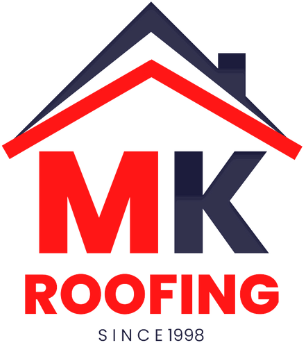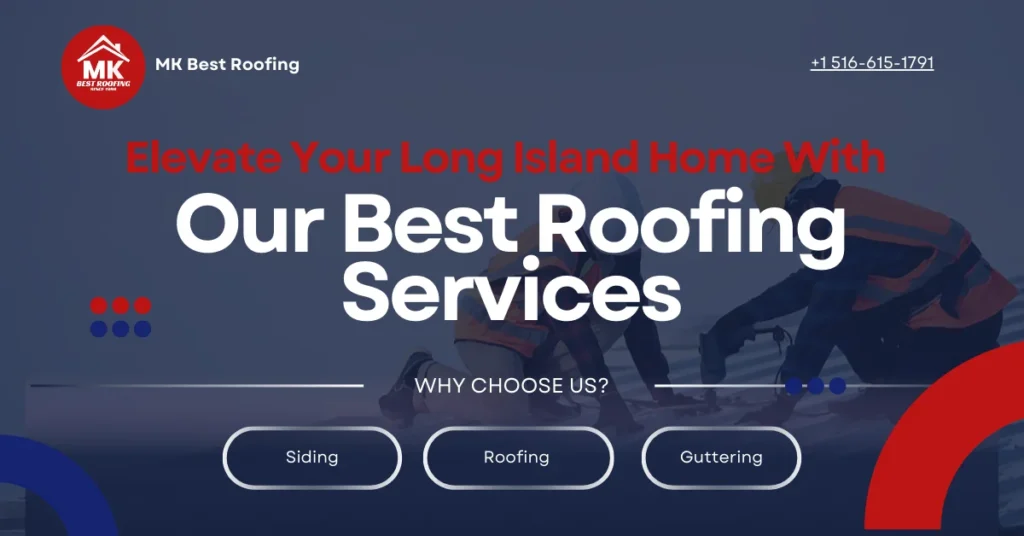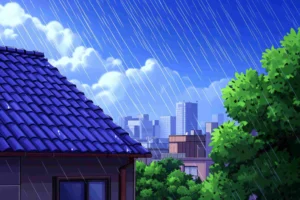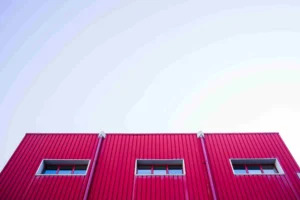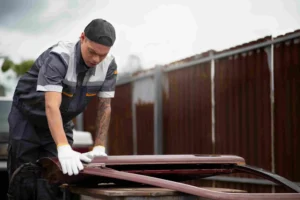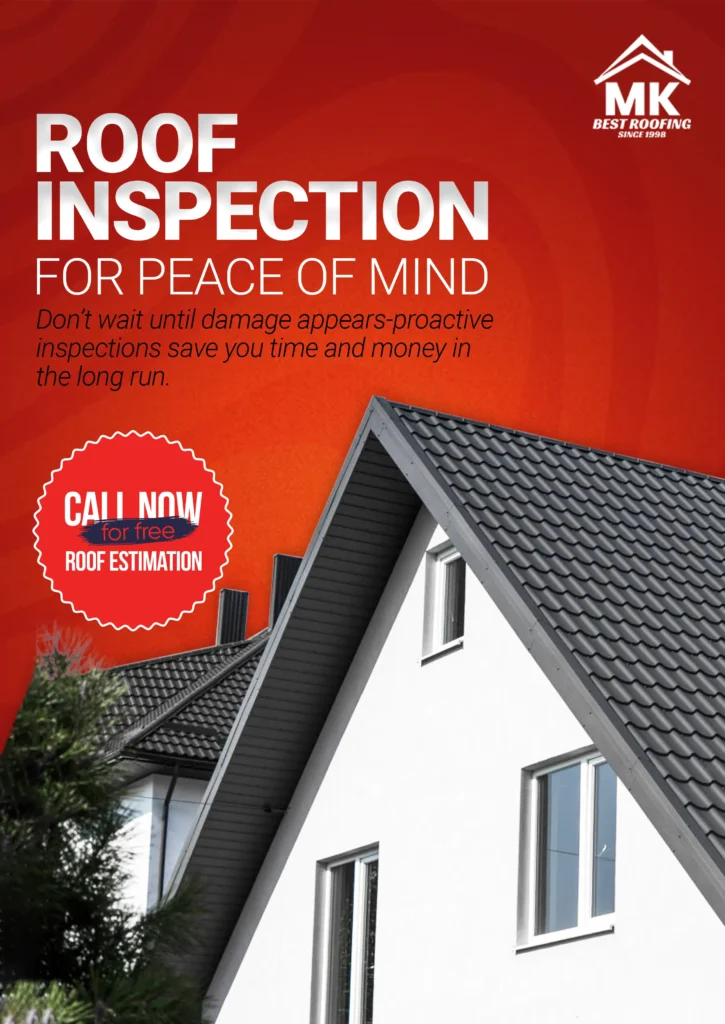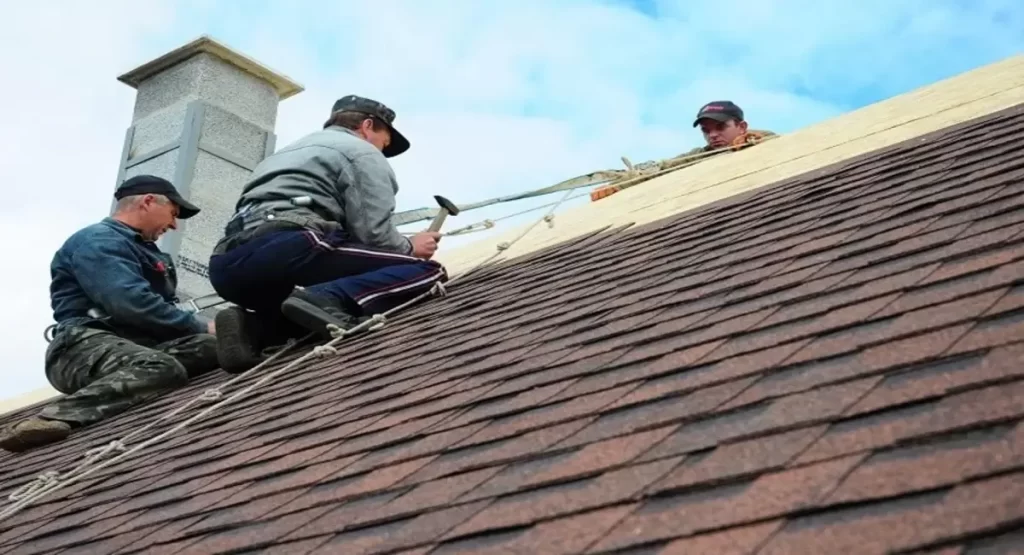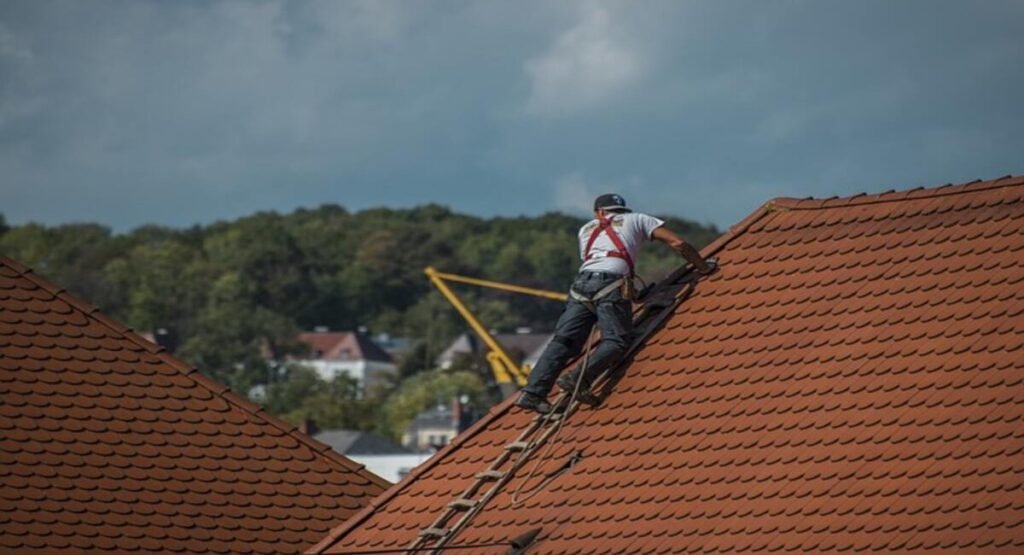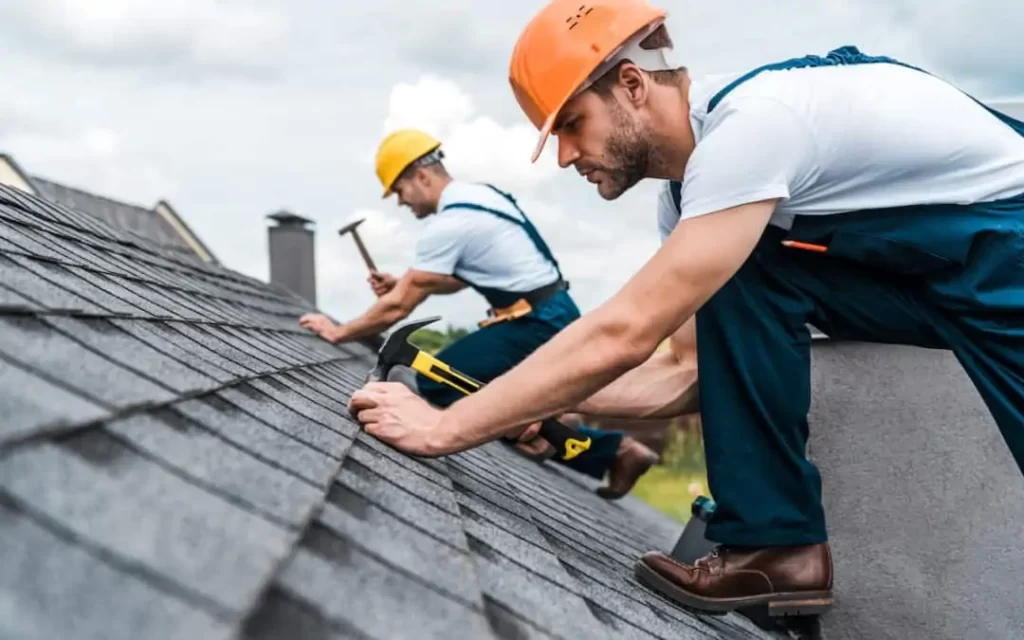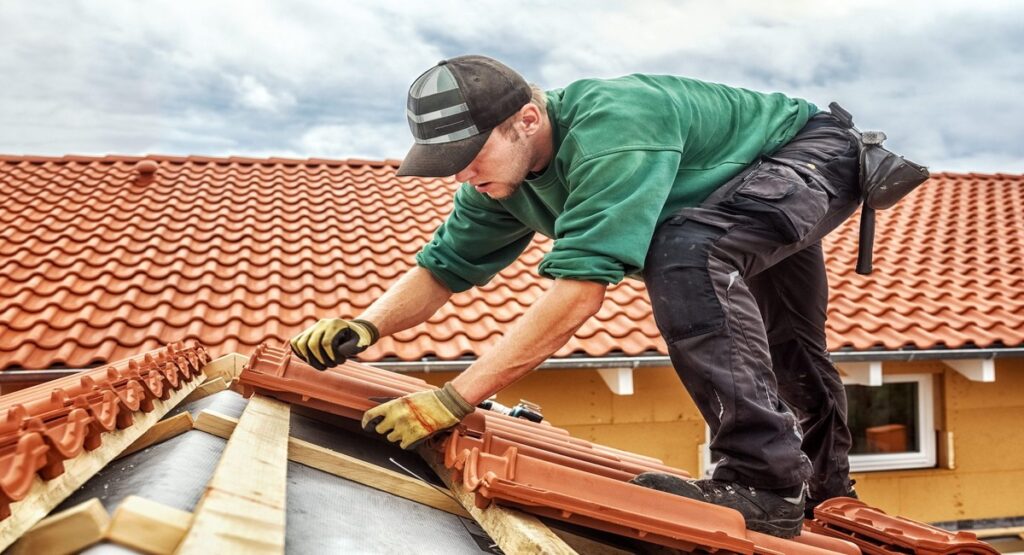When you need a new roof or are replacing an old one, the materials you cannot see are just as important as the ones you can. One of the most important yet least visible components is the roof decking the structural base for other types of roofing materials, such as shingles, metal panels, or tiles. As for the roof decking, oriented strand board (OSB) is the industry standard for the majority of residential and commercial roofing projects in the U.S. But what is OSB exactly, and why is it so prevalent?
We’ll explore all you need to know about OSB for roofing in this blog: what it is, the benefits and drawbacks of OSB, your other options, how much it costs, and some of the best OSB roofing principles to adhere to.
What Is OSB?
OSB – Oriented Strand Board, or Sterling Board. It is a type of engineered wood similar to particleboard, formed by adding adhesives and then compressing layers of wood strands in specific orientations. These strands are laid in an alternating pattern (hence the name “oriented”) to form OSB’s high level of strength and rigidity. The result is a sturdy, stiff panel that resembles particleboard in appearance and feel, yet behaves more like a particle-reinforced structural fiberboard. It is usually available in 4’x8’ sheets and comes in varying thicknesses to accommodate different demands, such as wall sheathing, subflooring, and roof decking.
Why is OSB so Popular for Roofing?
There are many reasons why OSB has become popular in the roofing industry. Its first and most prominent benefit is an incredible strength-to-cost ratio. It’s typically more affordable than plywood, yet it meets most building codes and roofing loads, providing strength, durability, and capacity. Second, OSB is mass-produced and is commonly available in big-box stores nationwide. Construction workers and roofers typically like OSB because it is uniform and smooth, making nailing shingles or underlayment straightforward with even fasteners.
It’s also popular because of its dimensionally stable nature. OSB planks are less prone to warping and splitting than actual wood planks. Its cross-banded construction provides it with excellent resistance to changes in humidity, as well as swelling and shrinking properties that are critical for brickmold and roofing in areas with high-moisture conditions.
OSB vs. Plywood: Which Is Better for Roofing?
When choosing between OSB and plywood, two of the most popular types of roof decking, the determining factors often include price, local building codes, and climate.
OSB Pros:
- More affordable
- Uniform thickness and surface
- Good structural strength
- Larger panels mean no extra joints for a faster install
OSB Cons:
- Takes longer to dry when wet
- More likely to soak up moisture at edges
- Delamination under protracted water exposure- may.
Plywood Pros:
- Dries faster if it gets wet
- Slightly stronger and more impact-resistant
- Better resistance to edge swelling
Plywood Cons:
- More expensive
- Can vary in surface quality
- Less environmentally efficient to produce
For roofing, however, OSB is typically the go-to choice for new construction, particularly in tract housing or commercial projects that prioritize low cost and speed. However, in very wet or coastal environments, some builders and contractors continue to use plywood for its higher level of moisture resistance.
OSB Grades and Thicknesses for Roofing
OSB panels are classified according to exposure durability and intended application. For building a roof, there are generally two boards you’ll find on the market for use on the roof:
OSB/3
OSB/4
For use in most roofing applications, storey OSB panels must be at least 7/16-inch thick. In snow country or for homes with wider rafter spacing, thicker panels, such as 15/32 in or 5/8 in OSB, may be required by local building codes. Always consult your local building code and a professional roofer to determine your requirements for grade and thickness.
What Is the Life Expectancy of OSB Roofing?
When properly installed and maintained, OSB roof decking can last 30 to 50 years or more, which is roughly equivalent to the lifespan of asphalt shingles. OSB has a lifespan, and many factors influence how well it has been installed, including the climate, ventilation, and the type of roofing material. In general, OSB does not fail on its own, but may break down if it is subject to chronic leaks, insufficient ventilation, or delayed roof repairs. Homeowners should also note that if a roof does develop a leak, OSB can become spongy or delaminate, which complicates roof repairs and often necessitates a new deck installation.
Is OSB Eco-Friendly?
Environmentally speaking, OSB is a greener option than plywood. That’s because OSB is made of fast-growing, small-diameter trees like aspen and poplar, which are more renewable than old-growth trees that can be used to make plywood. Manufacturers are also employing low-VOC adhesives and allowing eco-friendly processes for OSB manufacturing. This makes OSB the healthier choice for builders.
Cost of OSB Roofing Panels
OSB prices stabilized in mid-2025, following the massive increases seen during the coronavirus pandemic and the resulting construction boom—4’x8’ OSB sheet. OSB tends to cost approximately $10-$30 per sheet for 1/2-inch thickness, with variations in cost based on thickness, location, and grade. By contrast, plywood panels of the exact dimensions can cost anywhere between $20 and $45 and up.
For an average-sized 2,000-square-foot home, you may need 65 to 80 OSB panels, which would result in a material cost of approximately $400 by itself. On its own and underlayment, complete roof deck installation costs can be $1.50-$3 or more per square foot. As always, consult with a professional roofer for a quote.
Can I Reuse OSB When Re-Roofing?
Any swelling or minor amount of nail damage can compromise its structure. However, if the decking is not rotted and hasn’t been seriously damaged, it may be possible to leave it in place during a re-roofing project. Before replacing it, your roofer will inspect the OSB for any soft spots, delamination, or sagging.
Conclusion
OSB is the material of choice for most new residential and commercial roof decks.With all the benefits of our traditional OSB, it’s easy to see why.The fact that it’s being used so widely across the U.S. construction industry is proof that it works when installed correctly. It is not entirely without weaknesses in terms of damp conditions; however, these weaknesses can be managed relatively easily with some forethought, a good underlay, and professional fitting. If you’re constructing a new home or replacing a roof, OSB is probably your best choice .Contact Mottek group we will give you best professional help for the roof.
